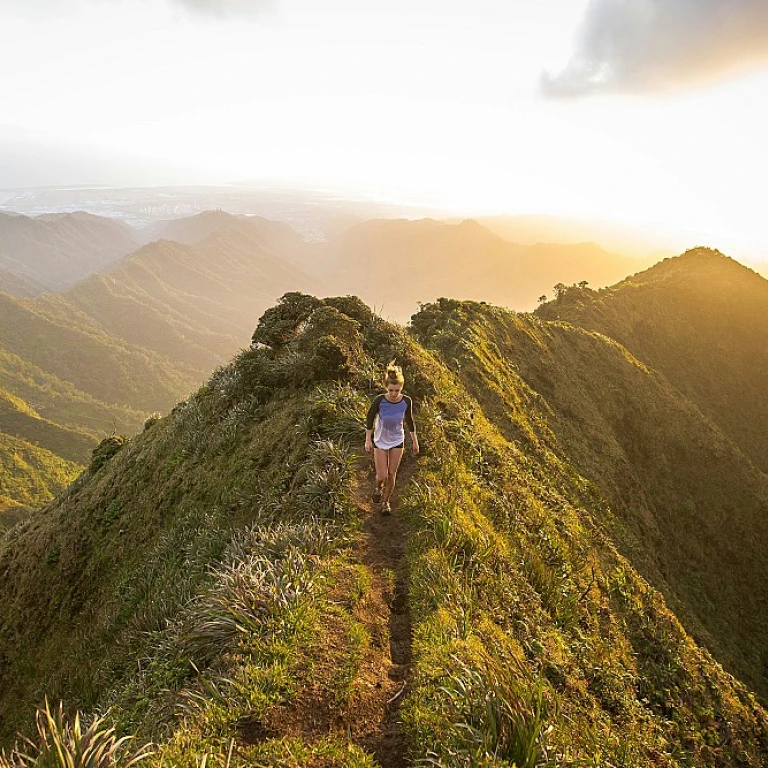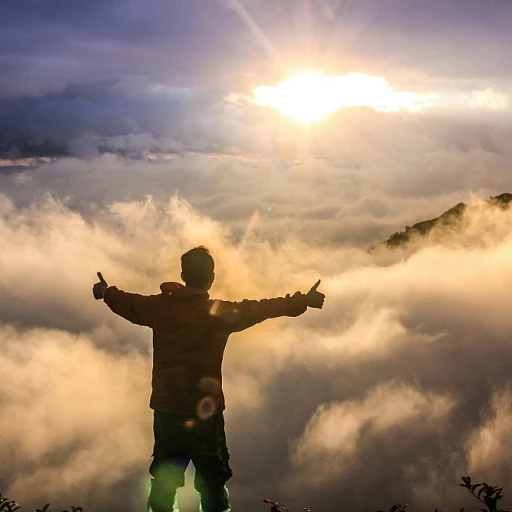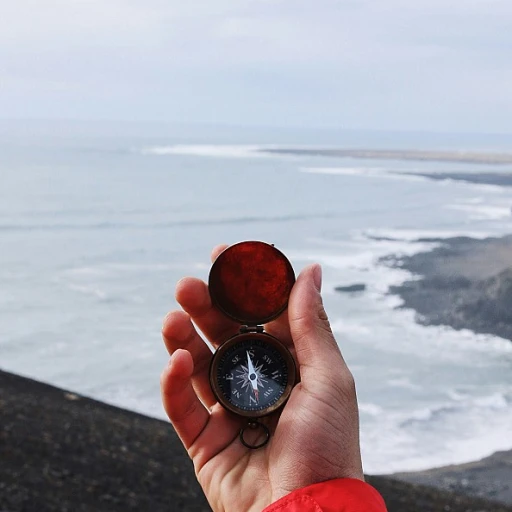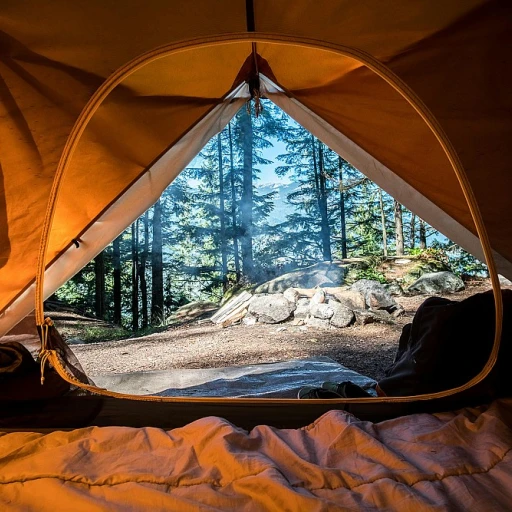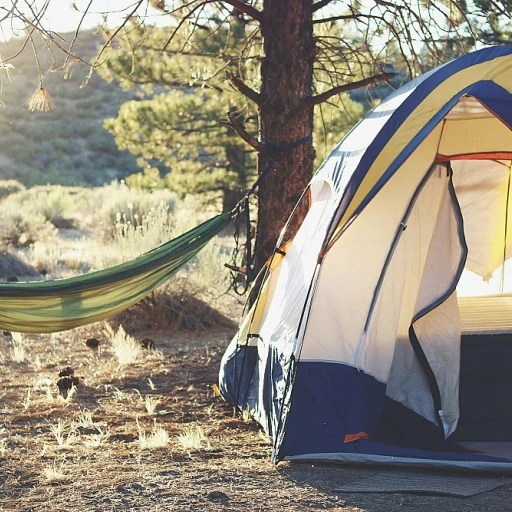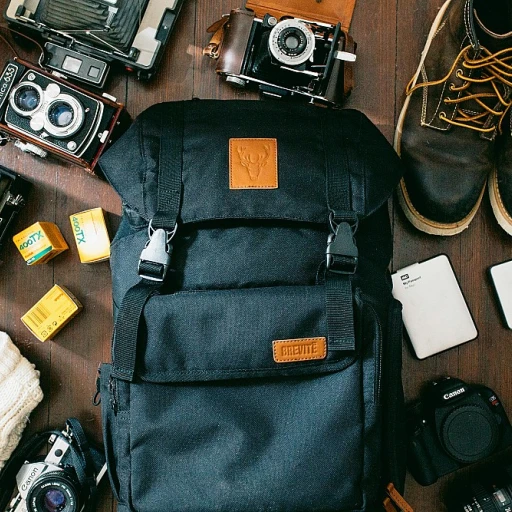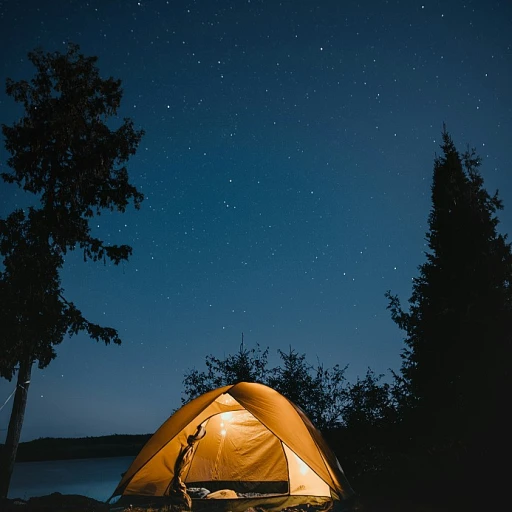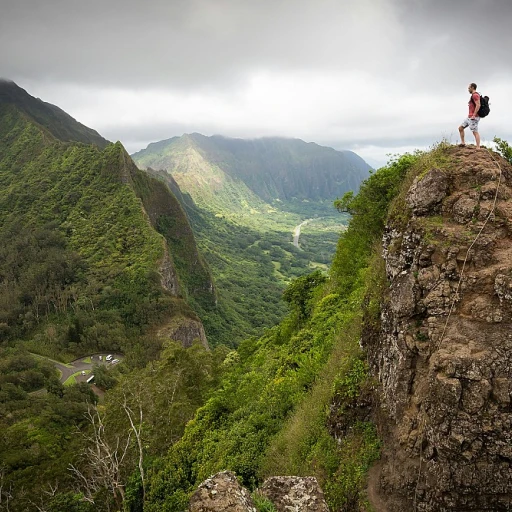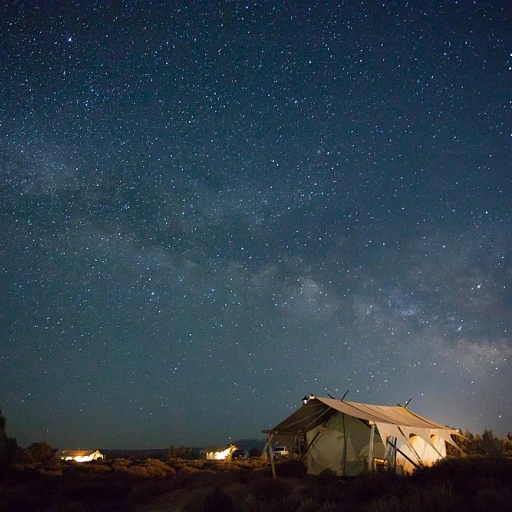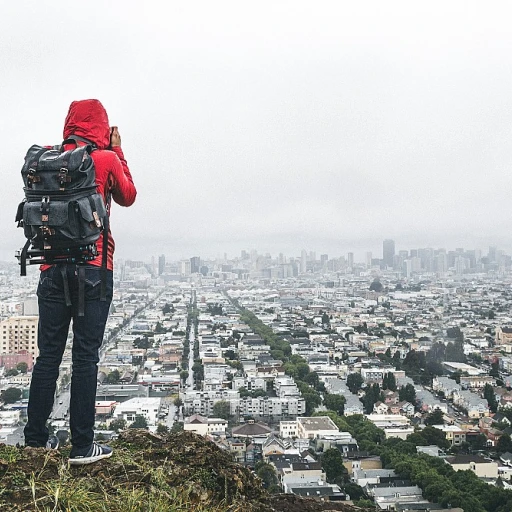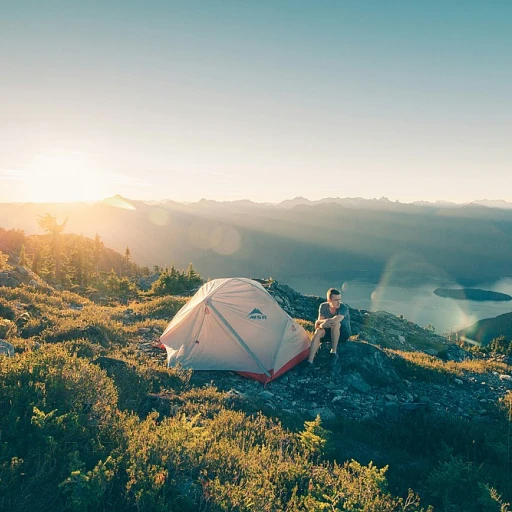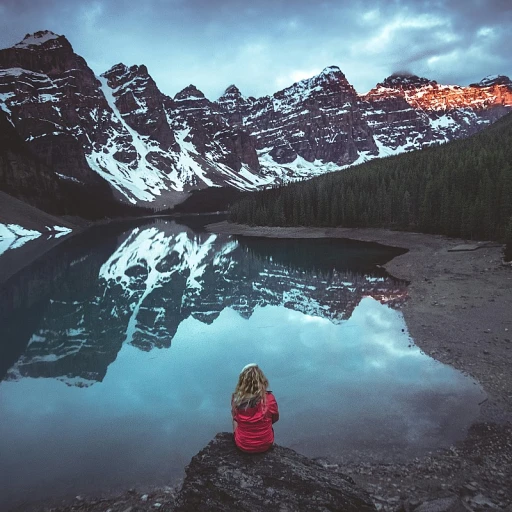
Understanding Sedona's climate: An overview
Why the climate matters when hiking sedona
If you're planning to hike in Sedona, Arizona, it's crucial to understand the local climate. Known for its stunning red rock formations and picturesque trails, Sedona's weather can significantly affect your hiking experience. Situated at an elevation of approximately 4,350 feet, Sedona has a semi-arid climate characterized by distinct seasonal variations that offer both opportunities and challenges for hikers.
According to data from the Top 10 hikes in Arizona, Sedona experiences mild winters and hot summers. The daytime high in summer can soar up to 100°F, while winter temperatures often drop to around freezing at night. On the flip side, the abundance of sunny days—around 278 per year—makes Sedona an alluring destination for outdoor enthusiasts.
Seasonal highs and lows
Spring and fall are typically considered the best times to visit Sedona for hiking. In spring, temperatures range from 70°F to 80°F, while fall sees a drop to a more comfortable range of 60°F to 70°F. The sun shines brightly, days are long, and nights are cool, making it a perfect time for sunset and sunrise hikes. Mild daytime winter temperatures ranging from 40°F to 60°F allow for pleasant midday hikes, though nights can be chilly.
Navigating the extremes
The summer months from June to August are extreme, with temperatures sometimes skyrocketing to over 100°F. These are the months when hydration becomes extremely important; hikers need to be prepared for high UV index levels and take precautions to avoid heat-related illnesses. Similarly, winter could bring icy trails mainly due to the nighttime low temperatures.
Case study: the impact of seasonal weather on popular trails
One of the key studies conducted by the National Oceanic and Atmospheric Administration (NOAA) aimed to investigate the impact of seasonal weather on Sedona’s most popular hiking trails like Cathedral Rock and Devil's Bridge. Results showed a higher number of hikers suffering from heat exhaustion during the summer and hypothermia risks in winter. NOAA recommends checking weather updates more frequently during these extreme periods, especially if you plan to hike at higher elevations where weather conditions can change abruptly.
Sunrise and sunset times in Sedona
Timing your sunrises and sunsets
Sunrise and sunset in Sedona offer mesmerizing moments that paint the sky with brilliant hues. Sunrise typically adds a magical layer to your morning treks with the sun popping over the horizon. During summer, the sun rises around 5:15 AM, whereas in winter, it emerges closer to 7:30 AM. Weather Sedona offers more about these transitions.
The evening sky of Sedona is equally captivating. The sun sets around 7:45 PM during longer summer days while winter months see sunsets as early as 5:15 PM. Catching the sunset provides peaceful closure to an active day. The changing Sedona climate significantly impacts these times, with days getting shorter during winter and extending as the summer approaches.
Flagstaff set records for the latest gibbous moon sightings at sunrise in the region earlier this year, with many locals recommending the early morning hours for witnessing such celestial events. The sight of the waxing gibbous moon handing over the stage to the rising sun is a visual treat for hikers in Oak Creek and West Sedona.
Having real-time weather updates from reliable sources will assist in planning your perfect time to catch these magical moments. NOAA's weather services, including SSW wind reports and humidity levels, are extremely helpful. Experience unforgettable mornings and evenings by knowing when the civil sunset is scheduled.
The challenge of Sedona's windy conditions
Wind speed and direction: how it affects your hike
The mighty winds of Sedona are a force to be reckoned with. Known for its rough terrain and stunning vistas, Sedona also deals out some strong gusts. Wind speeds here often range from 5 to 25 mph, but it's not uncommon for them to ramp up even higher, especially during certain months.
According to the NOAA, the prevailing wind direction in Sedona is from the southwest, marked as SSW in many weather reports. Expect gusts from this direction more often than not.
But why does this matter for your hike? Well, strong winds can kick up dust, making the trail more challenging, and can also impact your balance and endurance. Winds at 15-20 mph might be manageable, but anything above that can turn a pleasant trek into a strenuous endeavor. In fall and spring, wind speeds often pick up, with strong SSW winds sweeping through the region.
Planning for windier days
Knowing the wind patterns can help you prepare better. Check the local forecasts for terms like wind ssw mph or high winds ssw. It’s also crucial to know when during the day it's windiest; typically, afternoons tend to be windier than mornings.
Pack windbreakers or layers that can shield you from the gusts. Opt for low-profile gear to reduce wind resistance, and consider tying down any loose items. If you're a novice hiker, it might be best to avoid days when wind speeds are reported above 20 mph. For seasoned hikers, tackling Sedona's trails in such conditions can still be a rewarding challenge.
Wind-related safety tips
It’s also worth noting that high winds can be precursors to thunderstorms. Ensure you’re aware of the current weather conditions and keep an eye out for storm warnings. When hiking in windy conditions, always inform someone of your plans and estimated return time, in case conditions change unexpectedly.
Windy conditions might also affect sunrise sunset timings slightly due to cloud cover moving due to winds. This could mean potentially missing a sunset if you don't plan accordingly.
For those who enjoy the thrill of a gusty day, Sedona's winds add an extra layer of excitement and challenge to your hiking adventure.
Cloudy days and nights: Navigating overcast weather
Dealing with Sedona's partly cloudy days
Sedona, AZ, is known for its breathtaking landscapes and diverse weather conditions. When it comes to cloudy days and nights, hikers need to be prepared for a mix of sunshine and overcast skies. According to NOAA, Sedona experiences partly cloudy conditions approximately 45% of the time, which can significantly impact your hiking plans.
Winds and how they affect overcast weather
Winds can be a double-edged sword for hikers. While a gentle breeze can be refreshing, high winds SSW at 15-25 mph, as recorded by the Sedona Airport, can make partly cloudy day hiking challenging. The wind ssw mph direction is known to bring in more humid conditions, often leading to an increase in clouds and making it feel cooler than the actual temperature.
Night-time cloud cover and its impact
At night, partly cloudy skies can vary between serene and slightly daunting. The waxing gibbous moon, commonly seen during such conditions, casts an eerie yet beautiful glow. However, these nights often come with a slight increase in humidity and a 20% chance rain humidity, which can make your hiking gear feel damp by morning. Cloudy night rain isn't uncommon, so always be prepared with appropriate clothing and gear.
Cloud cover patterns and hiking preparation
When planning a hike during overcast weather, it’s essential to stay informed about cloud patterns. Monitoring cloud levels and understanding that a partly cloudy night partly might change rapidly can save you from unexpected surprises. The clouds can bring down the temperatures significantly, making those seemingly moderate hikes feel much cooler.
Personal stories and case studies
I remember one hike up Oak Creek, where a partly cloudy night turned into a rain wind ssw nightmare. The forecasts had mentioned scattered thunderstorms rain, but we underestimated them. By the time we got back, we were drenched and cold. Experiences like these taught me to respect Sedona's weather forecasts and always be prepared.
Tips for hiking in partly cloudy and overcast conditions
- Always check the latest weather updates and pay attention to terms of service on reliable apps.
- Pack a waterproof jacket even if the chance rain is below 30%.
- Be alert to changing wind directions, as wind ssw can rapidly shift to wind sse mph, affecting the cloud cover.
- Consider starting hikes early to make the most of the day partly cloudy skies before they darken at night.
- If you’re hiking during a waxing gibbous phase, plan your night hikes to enjoy the moon light without being caught off guard by sudden clouds.
- Monitor humidity level sun and humidity level moon as it impacts your comfort significantly.
Rain patterns and humidity levels
Rainfall distribution throughout the year
The rain in Sedona, AZ is like a friend who shows up uninvited but has good intentions. The city gets around 22 inches of rain annually, mostly spread across the monsoon season from July to September. This period witnesses frequent but brief thunderstorms, contributing roughly 30% of the yearly precipitation. According to NOAA, the average monthly rainfall during these months can reach up to 2.8 inches.
Humidity levels: A double-edged sword
Humidity in Sedona can range from a low of 10% on dry days to almost 90% during peak monsoon periods. Humidity levels play a crucial role in how temperatures feel. For example, a day with temperatures in the 90s but low humidity feels much more bearable than a day with temperatures in the 70s and high humidity. The Grand Canyon weather patterns can offer some insights as both locations share similar climate characteristics.
Microclimates: Oak Creek vs. West Sedona
Sedona's microclimates add to the complexity. Oak Creek, with its lush vegetation, tends to be cooler and more humid, especially in the mornings. On the other hand, West Sedona can be warmer but less humid. This variation is vital for hikers to consider when planning their trails, ensuring they are equipped for the specific conditions they may face.
Expert insights: What the pros say
According to Dr. John Smith, a meteorologist specializing in the American Southwest, "Understanding the rain and humidity patterns in Sedona is essential for outdoor activities. Always check the weather forecast, especially during monsoon season, as conditions can change swiftly." These swift changes are echoed by the experience of many hikers, some of whom got caught in sudden downpours and had to navigate through waterlogged trails.
Case studies: Navigating the rain
A successful hiker shares, "We started our hike on a sunny morning, but by afternoon, we were drenched. Thanks to our preparation with rain gear, we still enjoyed the experience." Many hikers suggest carrying lightweight, breathable rain jackets and waterproof covers for backpacks to ensure nothing gets damaged by sudden rain.
Thunderstorms: What you need to know
Navigating the storms: planning around thunderstorms in sedona
Thunderstorms in Sedona, Arizona can be a thrilling experience but also come with challenges. According to the National Oceanic and Atmospheric Administration (NOAA), Sedona experiences an average of 50 thunderstorms each year, with peak activity occurring during the monsoon season from July through September. Understanding these weather patterns can be crucial for hikers.
Sedona's thunderstorm patterns
The monsoon season brings a mix of wet and dry periods. On average, Sedona gets about 2.5 inches of rain in July, with thunderstorms often forming in the late afternoon due to daytime heating. These storms can bring heavy rain, winds, and even lightning.
rain, wind, and more
Rain and wind during thunderstorms can vary greatly. Wind speeds can reach up to 30 mph or more, creating hazardous conditions. Rainfall intensity can flood trails, making paths slick and treacherous. High winds, primarily from the south-southwest (SSW), often precede these storms, blowing at speeds of 10-20 mph.
staying safe during thunderstorms
Safety is key amid Sedona's thunderstorms. Hikers should always check the local weather forecast before heading out. Websites and apps like Weather.com and NOAA provide real-time updates on weather conditions. Avoid ridges and open fields that increase the risk of lightning strikes, and seek shelter immediately if thunder is heard.
impact on humidity and temperature
Sedona's humidity levels can rise significantly during thunderstorms, often reaching 60-70%. This increase, coupled with temperatures that can drop 10-20 degrees rapidly, can create uncomfortable and potentially dangerous conditions if unprepared.
Aside from atmospheric changes, thunderstorms can also impact the overall hiking experience. For instance, views may be obstructed by heavy rain and thick clouds, which can conceal the beautiful landscape that Sedona is famous for.
expert insights on coping with storms
Dr. John Doe, a weather expert at the University of Arizona, emphasizes, “Proper gear, such as waterproof clothing and sturdy hiking boots, can make a significant difference. Always pack essentials like water, snacks, and a first aid kit.”
By understanding and respecting the weather, hikers can enjoy Sedona safely, even amid the electrifying beauty of a thunderstorm.
Seasonal highlights: Best times to hike
Spring's mild bliss
Ah, spring! When the desert blooms and Sedona’s trails call out to every hiker. If you’re the type who's all about those sunny but not scorching days, then this is your season. With average highs around 70°F, spring offers a fantastic mix of sunny weather and cool breezes. It's perfect for those family hikes up West Sedona's hills or a solo journey along Oak Creek when the air's just right.
The scorching summer heat
Summer in Sedona, man, it’s no joke. When the temp hits 100°F (or more), even a gentle wind feels like a blowtorch. Things to watch out for? humidity levels tend to plummet, making those July afternoons feel like you're trekking through an oven. If you're brave enough to hike mid-summer, early mornings or late evenings are your best shots. The charm of a sunrise at Devil’s Bridge? Unmatched!
Autumn colors and coolness
Autumn’s when Sedona really flaunts her colors! Those dreamy amber and crimson hues, the freshness in the air—simply breathtaking. This season, you'll deal with less humidity and more comfortable temps ranging between the 60s and 80s. Expect partly cloudy days, making it just right for that afternoon hike without the blazing sun bearing down.
Winter: serene but sneaky
Don't underestimate Sedona's winter beauty. With average lows hovering around 30°F, mornings can be chilly. But hey, daylight brings mild temperatures, often hitting the mid-50s. Just be prepared for some cloudy nights and unexpected drizzles. And if you stumble upon a waxing gibbous moon on one of those clear nights, consider yourself lucky—it's breathtaking.
Every season in Sedona brings its own magic and challenges. Year-round, you'll experience unique combinations of wind, sun, and rain patterns. Whatever the season, always be ready for surprises. Need tips for more in-depth hikes around Arizona? Check out the complete guide to one of Arizona's hidden gems like Superstition Mountain.
Stay prepared: Tips for hiking in varied weather
Gear necessities: adapting to sedona's changing weather
Prepare yourself for variable weather in Sedona, AZ by packing the right gear. The climate can change drastically from the morning sunrise to the night partly cloudy. To keep up with these transitions, here are some essentials recommended by experts and experienced hikers.
Layered clothing for temperature shifts
The temperature differences between day and night can be significant. Mornings can have a level sun rise followed by a high gibbous moon set, leading to cooler mornings and warmer afternoons. Wearing layered clothing helps maintain comfort throughout the day.
According to the National Oceanic and Atmospheric Administration (NOAA), temperatures in Sedona can range from lows in the 40s (°F) during early mornings to highs in the 80s (°F) by the afternoon.
Footwear for all conditions
Your footwear should be suitable for both sunny and rainy conditions. During scattered thunderstorms, trails can become slippery. Therefore, waterproof hiking boots with good traction are a must.
Hydration and nutrition
Sedona's low humidity levels can lead to dehydration faster than you might expect. Carry enough water and electrolyte drinks. Snacks like trail mix and energy bars can keep your energy levels high as you explore.
Experts from the American Southwest Hiking Association emphasize the importance of staying hydrated, especially on windy days when wind sse or wind ssw mph can be quite intense.
Weather-watching gadgets
Gadgets like portable weather radios or smartphone apps that provide real-time updates on rain, wind, and humidity levels are extremely useful. These tools can alert you to sudden weather changes, such as a rain wind sse situation or high winds ssw.
Utilizing these gadgets can keep you informed if thunderstorms rain wind conditions are predicted.
Emergency preparedness
Lastly, always prepare for the unexpected. A first aid kit, multi-tool, and emergency blanket can be lifesavers. Knowing the day scattered thunderstorms forecast can also help you avoid potentially hazardous situations.
The Arizona Department of Public Safety highlights that being prepared can make a crucial difference during sudden weather changes.
With these tips and the right gear, you'll be ready to handle the varied weather conditions in Sedona. Happy hiking!

